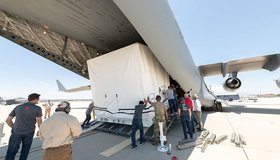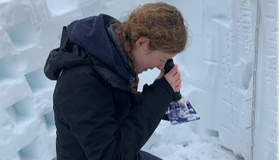
Water-Tracking Satellite Moves Closer to Blastoff
Set for launch next year, the Surface Water and Ocean Topography mission will help scientists monitor Earth’s oceans, as well as the amount of freshwater in its lakes and rivers.

Western Soils And Plants Are Parched
For the second year in a row, drought has overtaken much of the U.S. from the Rocky Mountains to the Pacific Coast. Our Crop-CASMA soil moisture data portal, jointly developed with the U.S. Department of Agriculture, reflects the dry times.

NASA Snow Campaign Wraps For 2021
The 2021 SnowEx field campaign, which is helping determine how much water winter snowpack holds, has come to a close. Teams took snow measurements at six sites across the western U.S., on the ground and with drones and airplanes flying overhead.

The Central California Town That Keeps Sinking
The very ground upon which Corcoran lies has dipped nearly 12 feet in 14 years as a result of pumping of underground water for irrigation. Scientists can track the subsidence in the region using radar and satellite technology.

Reclamation Provides $2.5M For Snow Water-Supply Forecasting
The U.S. Bureau of Reclamation has announced $2.5 million of funding for 12 projects to advance snow measurement technology with the goal of improving water-supply forecasts.

PACE Terrestrial-Land Community Assessment
NASA’s Plankton, Aerosol, Cloud, ocean Ecosystem (PACE) mission is inviting the terrestrial-land community to provide insight into how PACE data products can be used.

New SWOT Satellite to Survey World's Water
How much water sloshes around in Earth’s lakes, rivers, and oceans? And how does that amount change over time? The upcoming Surface Water and Ocean Topography (SWOT) mission plans to find out.

Sizing up Remote Lakes From Space
Researchers have found a new way to measure the depth of some of the most isolated, shallow lakes, using NASA's ICESat-2 satellite. Knowing the shapes of lake beds in dry regions enables us to better estimate the amount of water stored in these basins.

Using Floodwater to Weather Droughts
Floodwaters aren't what most would consider a blessing. But they could help remedy California’s increasingly parched groundwater systems, according to a new study.

NASA 2021 Water Resources Solicitation
NASA has released a 2021 solicitation for water-resource proposals through NASA's Research Opportunities in Space and Earth Sciences (ROSES). The first-round deadline is May 21, 2021.